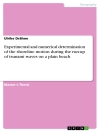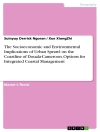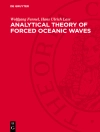Oceans and the Atmospheric Carbon Content, presents an interdisciplinary overview of the role of the oceans as a carbon sink and its relation with p H increasing trends and climate change. This volume discusses topics such as: climate variability during the last deglaciation, based on a high-resolution pollen analysis; the potential impact of CO2 from large metropolitan areas over the adjacent coastal zones and the importance of having high resolution atmospheric CO2 data to estimate accurately air-sea CO2 exchanges; present- day CO2 fluxes in the coastal ocean and their potential feedbacks under global climate change; phytoplankton community responses to climate change with emphasis on decreasing p H trends in sea water and its ecological effects; p H decrease and its effects on sea-water chemistry from a ten year time-series; the effect of acidification on metal bioaccumulation; the effects of increasing temperatures and acidification on contaminant dynamics and availability to biota; the prevention of potential environmental impacts related to the geological sequestration of CO2. The book provides an updated synthesis of current concerns related to global change trends in the oceans with a strong emphasis on acidification. The content draws attention to the importance of dealing with observed global change trends and their effects upon the oceans using an interdisciplinary approach due to their complexity and interlinks between different areas of knowledge.
Зміст
Introduction.- 1 Climate variability in the north-western Iberian Peninsula during the last deglaciation.- 2 Impact of Oporto Metropolitan Area carbon dioxide emissions over the adjacent coastal zone.- 3 Present day carbon dioxide fluxes in the coastal ocean and possible feedbacks under global change.- 4 Aspects of phytoplankton communities response to climate changes.- 5 p H decrease and effects on the chemistry of seawater .- 6 Effects of sediment acidification on the bioaccumulation of Zn in R. Philippinarum.- 7 Contaminant cycling under climate change: Evidences and scenarios.- 8 The use of weight of evidence for environmental quality assessment in sediments above sub-seabed geological formations for the storage of carbon dioxide.- Conclusions.- Index.












